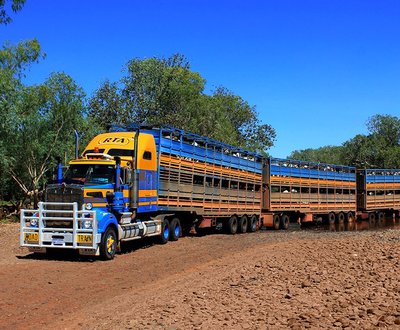While a truck’s engine may still be measured in horsepower, it is a long time since horses — and many times, bullocks — have been used to get freight from here to there over the long distances that separate Australian towns and cities. But one thing that has remained constant since white settlement is the romance of the road, and the pulling power it has for many people.
For some, the kilometres to be travelled can be a chore; for others there is no other path they would choose than to haul and deliver the goods that make our lives worthwhile.
The history of trucking and truckies in Australia has brought us to a point where the road freight industry accounts for 1.7 per cent of GDP and employs more than 245,000. There are 353,331 km of paved and 559,669 km of unpaved roads crisscrossing the vast countryside of Australia. Hauling freight from one side to the other or from top to bottom can often take over 5 or more days and also take you into some very remote areas.
The first trucks were steam-driven and used at the Yudnamutana copper mines in South Australia from 1863, but it was not until 1912 that the first internal-combustion engine was introduced. From 1914 manufactures began developing vehicles powered by petrol, with numerous half-track vehicles towing two trailers.
The growth was stalled in 1920 when state governments began an extensive expansion of the rail lines, but by 1942, because of the demands resulting from the Second World War, coastal shipping was in short supply and the train lines were overloaded. Trucks were brought into service to make up the shortfall and they’ve not looked back since.
While much of the country’s truck fleet is operated by large companies, there are still many owner-drivers on the roads, a process that started after WWII when ex-servicemen bought ex-military trucks to set up in business.
They helped lead to the formation of The Long Distance Transport Association, a group formed to lobby for the end of the taxes used to protect rail freight. But even when a further tax, the Road Maintenance (Contributions) Tax, was introduced in 1956, it did little to stop the growth of the trucking industry. It was eventually abolished after the “Razorback Blockade” in 1979.
Many of those pioneering companies seen on our roads in the early years have either ceased or been absorbed whilst others have survived and are still operating today. A few of these companies were Ansett Freight Express (AFE) Kwikasair Express, Comet, Vaughan Transport, Buntine Transport and Brambles. Some along with Linfox, TNT, Ipec, Lindsay’s Transport, Frasers, GTS and Toll can still be seen travelling the roadways today. This is only a minute number of Companies and Owner Drivers that make up to days Road Transport Industry.
In the 1970’s, diesel engines with turbochargers vastly improved the performance of the 370.hp engines, and we now see freight carried in everything from fixed body trucks to road trains (often made of three to four trailers), usually operating in remote parts of the country.
Among the truck manufacturers who supported the road transport industry in Australia were, Kenworth, Mack, Western Star, Ford, Volvo, White, Diamond T and Mercedes Benz and most of these continue their support today. In recent years we saw models from Hino, Isuzu, Scania and DAF introduced thus the Transport Industry is now represented by manufacturers from around the world.
Truck drivers can be away from their homes and families for long periods, often weeks, as they haul goods from one end of the country to the other on Australia’s vast road network. It can be a lonely life, but there is also great camaraderie among drivers as can be seen when 10 or more huge semi-trailers pull up together at roadside stops and service station dining rooms.
The horse may have disappeared from the roads but drivers still saddle up to put in gruelling multi-day shifts to transport everything from our daily bread to herds of cattle to market. Hence the adage
WITHOUT TRUCKS AUSTRALIA STOPS.


